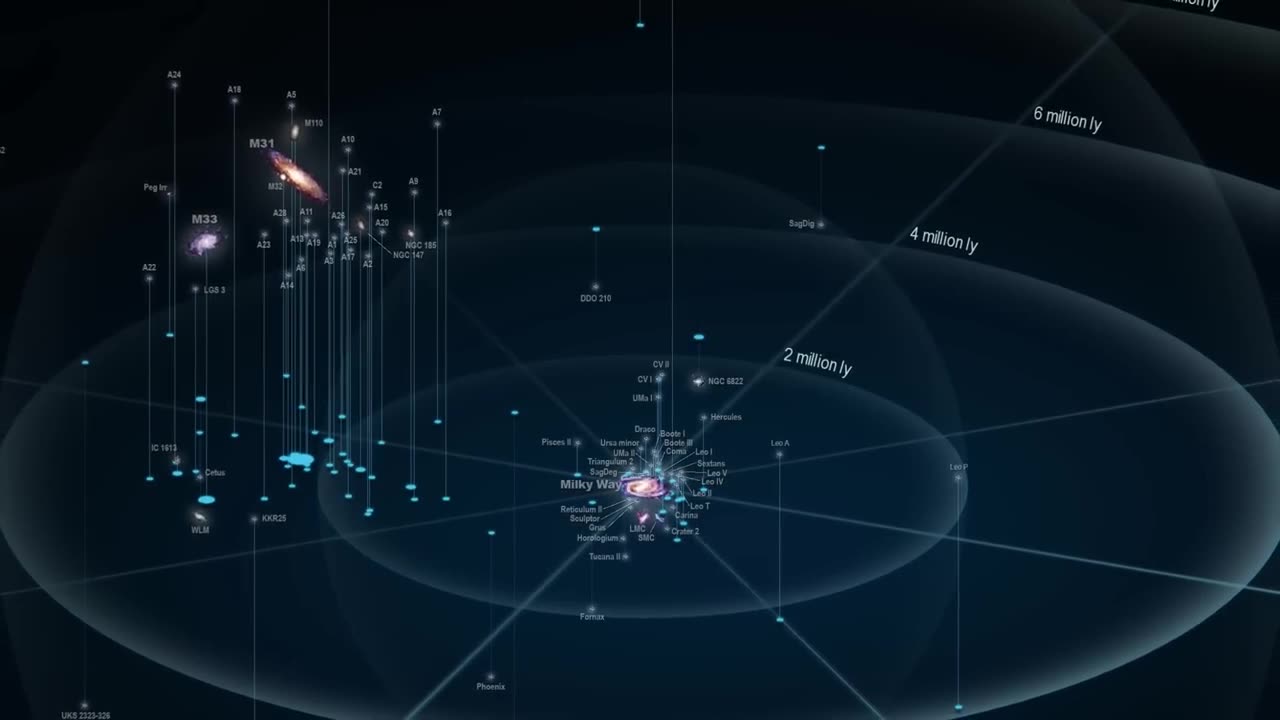Premium Only Content

How Big is The Universe_
The universe is an awe-inspiring expanse that stretches beyond the limits of human imagination and measurement. Current scientific understanding suggests that the observable universe is approximately 93 billion light-years in diameter. This mind-boggling figure refers only to the portion of the universe we can see, determined by the speed of light and the age of the universe, estimated at around 13.8 billion years.
However, the observable universe is just a fraction of the whole cosmos. Beyond our observational horizon lies the unobservable universe, which could be vastly larger, potentially infinite. Theoretical models propose that our universe might be one of countless others in a multiverse, each with its own laws of physics and dimensions.
Galaxies, the building blocks of the universe, number in the hundreds of billions, each containing billions of stars and innumerable planets. The distances between these galaxies are measured in millions of light-years, with space itself expanding, making the universe's scale even more incomprehensible.
At the smallest scales, the universe is a mosaic of subatomic particles and forces, governed by quantum mechanics, while at the largest scales, it is a tapestry of cosmic structures, from star systems to galaxy clusters, interconnected by dark matter and influenced by dark energy, which drives its accelerating expansion.
In essence, the universe's enormity is a testament to both the vastness of the cosmos and the limits of human perception, continually expanding as our knowledge and technologies advance. It challenges our understanding of existence and inspires a profound sense of wonder about our place within this boundless expanse.
-
 1:29:31
1:29:31
Killerperk
1 hour agoRoad to BF6. Come hang out #regiment #bf6
1.35K1 -
 LIVE
LIVE
Jokeuhl Gaming and Chat
2 hours agoDARKTIDE - Warhammer 40k w/ Nubes Bloobs and AoA
41 watching -
 LIVE
LIVE
Cripiechuccles
3 hours ago😁💚💙MOTA MONDAY WITH CRIPIE💚💙 👌SMOKING, GAMING & WATCHING FLICKS!:😁
39 watching -
 36:11
36:11
Stephen Gardner
2 hours ago🔥'Burn ALL TRUMP FLAGS’ says Tim Walz + Democrat CAUGHT rigging own election!
9.58K4 -
 10:10
10:10
robbijan
1 day agoHollywood’s Hidden Messages: Predictive Programming & What’s Next
9.56K9 -
 40:13
40:13
MattMorseTV
3 hours ago $3.75 earned🔴It's EVEN WORSE than we thought...🔴
23.3K63 -
 LIVE
LIVE
MissesMaam
5 hours agoVariety Games💚✨
57 watching -
 LIVE
LIVE
Sgt Wilky Plays
2 hours agoThe Finals with the Pack
33 watching -
 32:55
32:55
Clickbait Wasteland
10 hours ago $0.23 earnedAsking New Yorkers Who They Support For Mayor: Wall Street
8.71K2 -
 LIVE
LIVE
Spartan
2 hours agoLittle bit of Halo and Expedition 33
13 watching